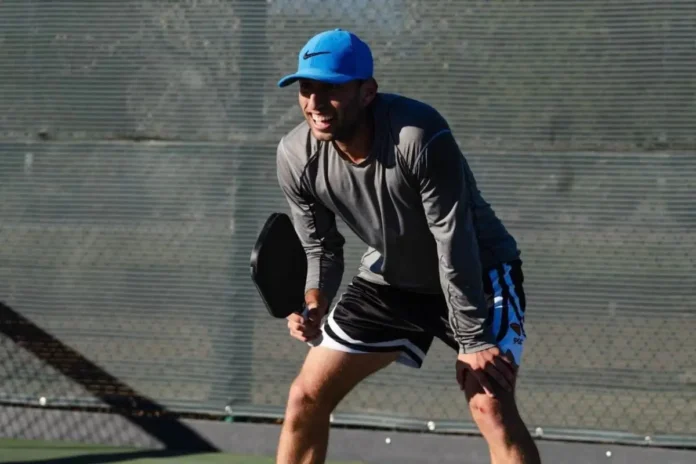Kyle Koszuta on Improving the Pickleball Defense: Understanding effective defensive strategies in pickleball can help players stay competitive and extend rallies. Kyle Koszuta of ThatPickleballSchool emphasizes the importance of adjusting paddle positioning based on an opponent’s shot to improve defensive performance.
Koszuta highlights a key defensive principle: if an opponent’s paddle is high, the defending player should lower their paddle. This “seesaw effect” helps players prepare for incoming attacks. He stresses that even if a ball is popped up, the point is not lost, and proper defensive positioning allows for recovery.
Key Defensive Techniques
Koszuta breaks down four essential techniques to improve defense:
- Paddle Down – Holding the paddle with two hands for better control, Koszuta lowers his paddle when the ball is hit high. He credits Vivienne David as an early adopter of this technique.
- Lift Like a Volleyball Player – Players should lift defensive shots like a volleyball dig, creating a high trajectory to extend the rally.
- Miss High – Hitting the ball into the net ends the point immediately. Koszuta advises missing high to keep the play alive.
- Move Back to the Kitchen – After executing a good defensive shot, players should move back to the kitchen line to regain control.
Game Situations and Strategy
Recognizing when to adjust positioning is crucial. If a third shot drop is too high, defenders should prepare for an attack. Lowering the paddle quickly reduces reaction time and enhances defensive play.
Koszuta also emphasizes adjusting paddle height when moving forward. While at the baseline, he keeps his paddle low. As he approaches the kitchen, he raises it to chest height, ensuring he is ready for fast-paced exchanges.
Dinking and Defensive Adjustments
When dinking, if a ball is accidentally popped up, stepping back and lowering the paddle allows for a controlled defensive return. Koszuta warns against standing still and giving up, instead urging players to stay engaged and ready to defend.
For waist-level shots, Koszuta sometimes uses a two-handed volley or a loose-grip one-handed shot for better control. Keeping the ball in play frustrates opponents, often leading to forced errors.
Balance and Stopping Before Contact
Maintaining balance before hitting the ball is another key point. Moving while making contact can result in weak returns. Stopping and stabilizing ensures better control and shot accuracy.
Drills for Defensive Improvement
Koszuta suggests two drills to hone defensive skills:
- Mid-Court Defensive Training – One player repeatedly feeds attacking shots, and the other focuses on defensive returns. Practicing for ten minutes sharpens reflexes and reactions.
- First-to-50 Game – A drill introduced by Michael Lloyd, where one player defends while the other continuously attacks. The goal is to maintain rallies, with the first player to reach 50 successful hits winning.
News in Brief: Kyle Koszuta on Improving the Pickleball Defense
Kyle Koszuta of ThatPickleballSchool shares key defensive techniques for pickleball, focusing on the “seesaw effect.” Players should lower their paddle when an opponent attacks high shots. By maintaining balance, practicing defensive drills, and staying engaged in rallies, players can improve their defensive play and extend points effectively.
ALSO READ: When to Use a Two-Handed Backhand in Pickleball: Pro Tips from James Ignatowich

